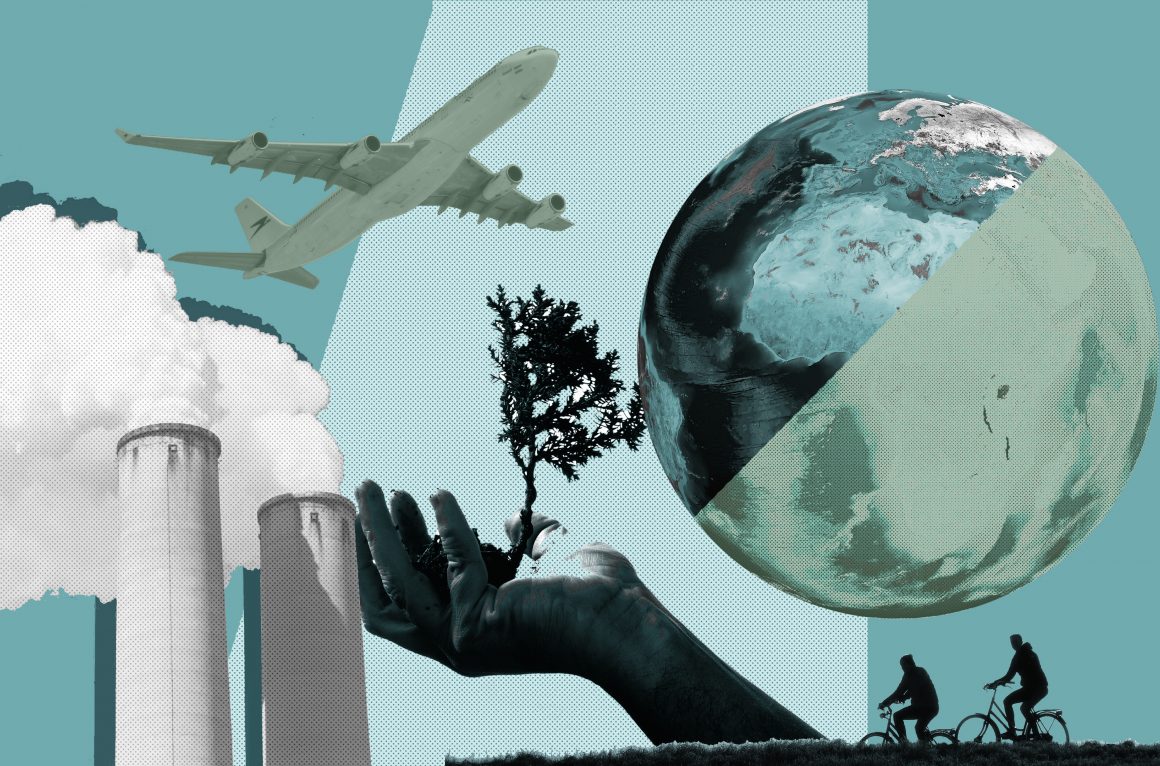
Sustainable U: The Eco footprint and you
By Rachneet Randhawa, September 14 2020—
With the looming pandemic and public health crises, now more than ever is the best and most opportune moment to ensure history does not repeat itself with the challenge of human-caused global warming and climate change in the years to come.
The ecological footprint is defined as measuring the demands made by an individual or group of people on global natural resources including the total area of land required to sustain an activity or population. It is the most commonly used standard to measure the human effect on the environment. It evaluates current consumption practices and the widening inequalities that result from resource use between and within countries.
A Global hectare (gha) measures the average biological productivity for a given year and accounts for the biocapacity of the region and the demand for its productive land. For instance, based on the smaller physical area of cropland it would be considered less biologically productive than pasture land — a wide an open space in which ranching and/or animal husbandry takes place.
The United Nations Human Development Index (HDI) is a metric that claims anything above 0.8 gha/person (based on available biocapacity) is high risk. For instance, per capita ecological footprints vary with Qatar clocking in at 15.5 gha/person as compared to the United States at 8.4 gha/person. Canada comes in at 8.3 gha/person, Australia 7.0 gha/person, Germany 5.1 gha/person, China 3.7 gha/person and the lowest with Haiti at 0.7 gha/person. Mostly HDI measures productive areas, everything from cropland and grazing lands for animal products to fisheries, the built environment for housing and infrastructure to lastly the amount of forest land needed to absorb carbon dioxide emissions from energy consumption.
The concept of the eco-footprint was originally coined by Canadian ecologist William Rees and Swiss regional planner Mathis Wackernagel in 1996. It is often mistaken or swapped for “carbon footprint” which though they are similar, differ in regards to the measurement of carbon dioxide emissions and other greenhouse gases of methane, nitrous oxide or chlorofluorocarbons (CFCs) that result from the activities of a single person or external entity such as a building, cooperation and country. It would also include direct emissions including manufacturing, heating and transportation and indirect emissions including electricity generated to produce goods and services. Often overlooked, there are also different “types” of eco footprints including the ecological footprint of consumption (EFC) or carbon footprint, Ecological Footprint of exports (EFE), Ecological Footprint of imports (EFI), etc.
The eco footprint calculators came into popularity by the Global Footprint Network (GFN), a non-profit organization that partnered with hundreds of cities and businesses around the world to make official the EF measure a metric of sustainability to calculate the per capita global footprint. The calculation is used to measure the equity of current consumption and production patterns.
The ecological crises of the Anthropocene era are illustrated by the fable of the boiling frog which describes the reasoning that if a frog is suddenly plunged into boiling water it will jump out. But, if it is put in lukewarm water and slowly brought to a boil it will not perceive the danger and be cooked to death. The moral of the story is indecisiveness and the inability of the frog to decide when to jump out. We all need to adjust to adverse situations and take strong and appropriate action while we have the time to do so. We can only do this by shifting mainstream and dominant identities.
Aside from the abnormal rising average temperature of Earth’s climate system, other ecological systems across our planet are being hindered in tumultuous ways. Likewise, major communities of plants and animals with similar life forms and environmental conditions also known as biomes are becoming endangered or eradicated — from grasslands and savannahs becoming barren with desertification or wildfire ravaging rainforests to the polar ice caps melting in the tundra.
However, a flaw of the eco-footprint measure is that it does not account for changes in biodiversity which in itself is a cumbersome fact. In reality, although it is an aggregate sum, it helps to change people’s perceptions and lifestyles and to promote awareness. You, as a more informed citizen, can tackle challenges toward becoming sustainable.
Earth overshoot day was Aug. 22, the date that humanity has exhausted nature’s budget for that year. The length of time proceeding this date means that we are drawing a deficit of resources stocks and above accumulating carbon dioxide in the atmosphere. Analogous to mounting credit card debt, the interest we are paying is in food shortages and insecurity and soil erosion, drastic weather patterns and natural disasters are the default to the debt cycle and global warming of course is bankrupting us. Nearly 121 countries acknowledge the movement and of course, this is a date that changes every year hence the #move the date campaign.
Interested in knowing your footprint? Choose only accredited websites such as the Global Footprint Network as an official calculator. Also, if you have a budding interest to learn more about eco footprints check out these documentaries which are free to watch on Kanopy with a Calgary Public Library membership:
- William Rees: Measuring Our Ecological Footprint
- The Consumer and The Planet
- Fundamentals of Sustainable Living
Post COVID-19 might seem far off but if we do not act now to understand how our lifestyles are having an adverse impact on the planet than we are in for a bigger challenge looming on the fringes.
Sustainable U is a regular column focused on sustainability. This column is part of our Opinions section and does not necessarily reflect the views of the Gauntlet’s editorial board.
